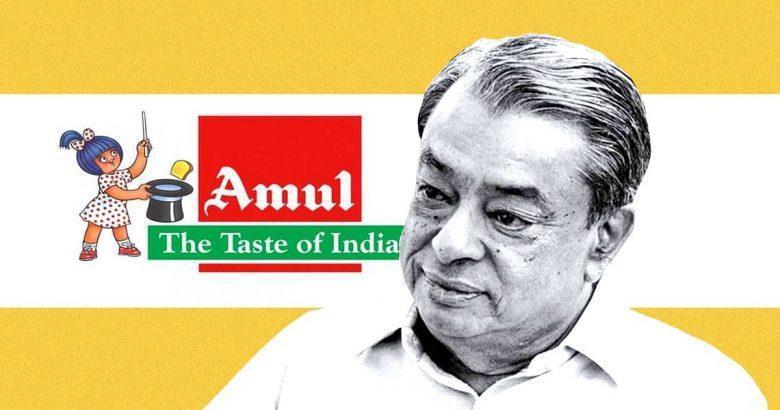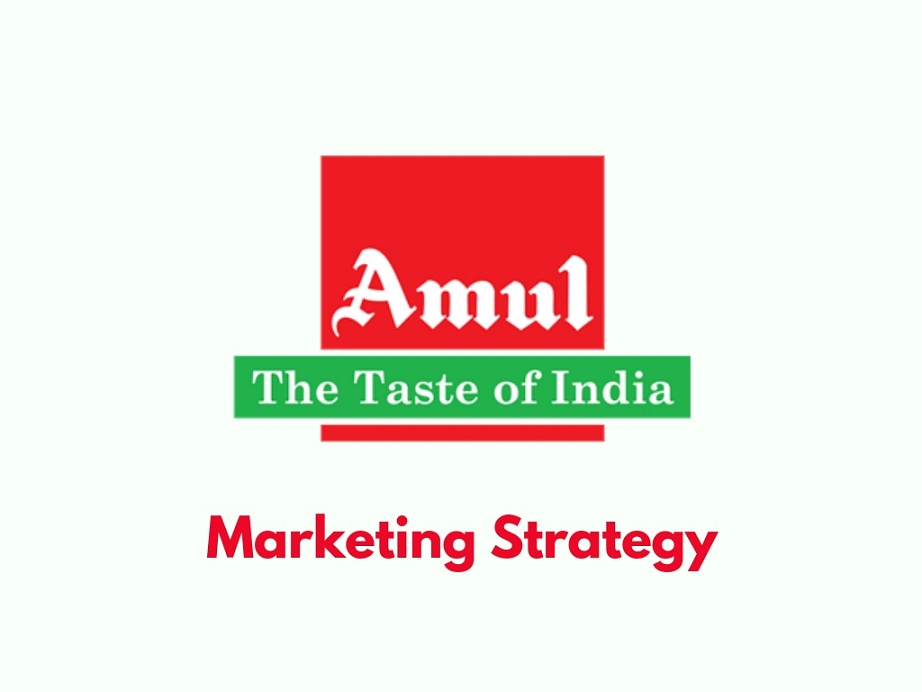Introduction
Anand Milk Union Limited, popularly known as Amul is a cooperative society based in Anand, Gujarat in India. Amul is derived from Anand Milk Union Limited. The company was started with the motive of providing welfare to the farmers and in the process, it went on to establish itself as one of the most successful brands in India. The marketing strategy of Amul includes its business model, general information, marketing model, and many more.

Dr Verghese Kurein, who is known as the “Milkman of India”, was responsible for turning India from a milk deficient country to the largest producer of milk in the world today in which Amul has played a key role.
Amul has 5 pillars in its business model. It is a “for the people” company. There is no single owner of Amul, all villagers manage Amul Cooperative society. Here are the 5 pillars of the business model.
- Milk Producers
- Village dairy cooperation
- District Milk cooperation union
- State cooperative milk marketing federation
- The Consumer

Amul is a household name that owes its grand success to several factors, such as strict hygiene standards, good-quality products, product diversification, and most importantly, its effective marketing strategies. In fact, Amul became a model to be followed during the White Revolution in India. We are all familiar with the phrase “Utterly Butterly Delicious,” and no one can even forget the face of the Amul Girl. There are many factors that contribute to the success of the Amul marketing strategy.
1. Amul’s mascot
The popular face of the brand, also known as the Amul Girl, is someone we all recognize in an instant. She is the official mascot of the brand. The Amul Girl has been an intrinsic part of Amul’s business strategy throughout the years. The Amul Girl is a mainstay of most of its marketing strategies.
2. Its brand image as “The Taste of India”
Amul’s tagline is a remarkable marketing effort on the part of the brand. It is what made the brand extremely popular in its initial days. Portraying the brand as a representation of India also helped Amul forge deep ties with the Indian audience.
3. The longest-running ad campaign
Amul has its name in the Guinness Book of World Records for running the longest ad campaign ever. Amul Girl has been the face of the brand for more than 39 years, without any change.
4. Target audience segmentation
Amul does not have premium offerings. On a customer-wise targeting structure, Amul’s products can be categorized under three broad labels, which are as follows:
- Kids: Amul Kool and Amul Pro Kids
- Youth: Amul cheese spread and Amul milk
- Health-conscious customers: Amul Shakti and Amul Lite
5. Low-cost products
One of the best features of the Amul marketing strategy is its low product pricing. Its pricing strategy caters to the daily consumption habits of the average Indian consumer. This makes Amul’s products affordable. The brand increases the price of its products, as per the increase in the audience’s income.
6. Digital marketing efforts
Albeit an old brand, Amul has not limited its efforts to the traditional style of marketing and advertising. It has expanded into the digital arena and advertised its products via Facebook, Twitter, and Instagram. Amul connects with its customers online and even resolves their queries and complaints through these platforms. Nowadays, Amul seems to be focusing more on revamping its ideas for the digital medium.
7. Diverse product portfolio
One of the most crucial aspects of Amul’s business strategy is its product portfolio. The brand offers a wide variety of products, thereby catering to the needs of a large audience. While their primary customer base comprises the middle class, Amul has something in store for everyone. It enjoys dominance over different customer segments.
8. Marketing mix
The marketing mix is the combination of factors a company can control in order to influence its customers to purchase its products and services. It usually includes the four Ps: product, price, place, and promotion.
Amul Model
This model aims to provide ‘value for money to the customers and protect the interests of farmers simultaneously’.
The Amul Model is a three-tiered structure that is implemented in its dairy production:
- Amul acts as a direct link between milk producers and consumers that removes the middlemen which help them offer products at affordable prices.
- Farmers (milk producers) control procurement, processing, and marketing.
- Run by Professional Management
With this model, Amul has made a significant impact in the market along with taking care of the farmers and also providing value for money services to its customers.
Business model
The brand creates products for everybody that’s why we have divided its target audience into two segments.
Business to Consumers (B2C)
Amul created products for every age group based on their interests and choices. Here are the names of a few products.
Business to Business (B2B)
In T.V. advertisements, we generally see Amul focusing on the B2C market. But in reality, the brand has a special interest in the B2B category. B2B category people buy products in bulk and are regular customers that’s why they are very important for the company.
Amul’s product mix
Amul’s product mix entails a wide variety of dairy products, such as cheese, milk, ghee, butter, curd, milk powders, flavored milk beverages, paneer, flavored yogurt, and more.
Conclusion
Amul has been ranked No. 1 brand by Campaign Magazine in its list of Top 1000 brands of Asia. From struggling with the exploitation of middlemen to being every Indian household’s mandatory product, Amul has come a long way.




